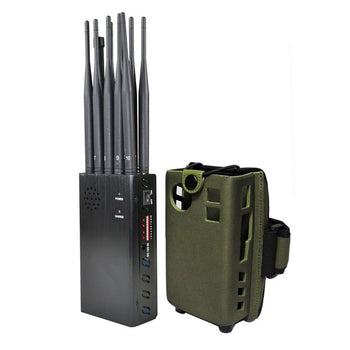What are the mistakes in the installation of signal jammers in detention centers?
In order to meet the needs of the new situation, improve the technology prevention capabilities of detention centers, strengthen the technical management level of detention centers, promote the construction of digital detention centers, promote the harmonious and stable development of detention centers, and continuously improve the modernization level of detention centers, it is necessary to scientifically and effectively control and prevent cell phone signals in detention centers. , to eliminate the security risks caused by illegal use of mobile phones. However, there are generally three misunderstandings in the installation of cell phone jammer in detention centers. Let's take a look at the mistakes in the installation of cell phone signal jammers in detention centers.
Myth 1: The bigger the power, the better
1. The host frequency output is inaccurate, the frequency drifts, the bandwidth is too wide, the power is wasted, and the base station is interfered;
2. The shielding efficiency of the simple sweeping power suppression method is not high, and the radiation is large;
3. Power false standard, exaggerated propaganda, the nominal power loses its reference value;
4. Power is the foundation, and technology is the shutdown. It is better to find good methods and techniques than to fight for power recklessly;

Myth 2: Using directional antennas can avoid interference
1. There is a certain transmitted signal strength outside the directional angle of the directional antenna, but it is much lower than the main lobe, not completely directional;
2. The reflection of the building will still cause external interference;
3. The frequency drift of the host seriously affects the base station and causes external interference;
4. TD full-time shielding interference must exist.
Misunderstanding 3: High-power equipment radiates large, low-power radiation is small
1. High power adopts outdoor antenna function, which has long operating distance, large shielding coverage, uniform shielding signal, but very little radiation;
2. If the low-power equipment does not use multiple antennas for long-distance shielding, but is centrally arranged or 5 antennas work together, the radiated power will be greater than 10 microwatts/square centimeter, and the short-range radiation must be seriously exceeded.













